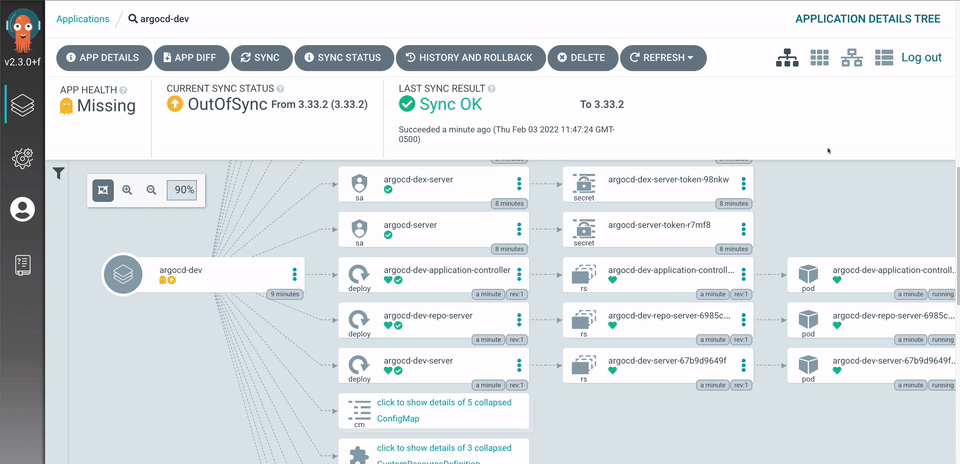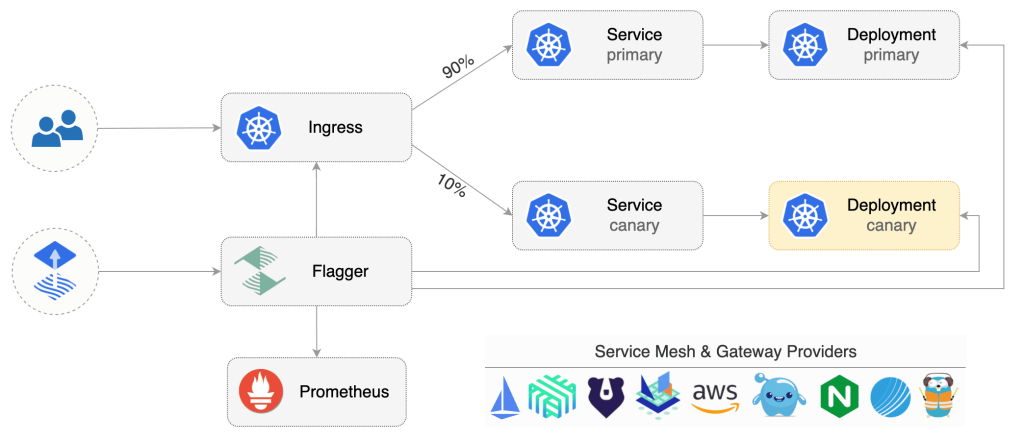What Are Kubernetes Deployment Tools?
Kubernetes is a popular container orchestration platform, increasingly used for CI/CD pipelines and to run production applications.
Kubernetes deployment tools are software designed to simplify the process of deploying applications in a Kubernetes environment. They handle various tasks such as service discovery, scaling, updates, and rollbacks. They offer a streamlined approach to managing and maintaining complex Kubernetes clusters, enabling developers and operations teams to focus on their core responsibilities rather than worrying about managing deployments.
Kubernetes deployment tools make Kubernetes more accessible, by abstracting away many of the complexities associated with the platform. This not only saves time but also reduces the risk of errors that could potentially lead to downtime or security vulnerabilities.
This is part of a series of articles about Kubernetes autoscaling.
In this article:
The Need for Kubernetes Deployment Tools
Reducing Complexity
Kubernetes, while powerful, is inherently complex, involving multiple layers of configuration and resource management. Kubernetes deployment tools significantly reduce this complexity by providing intuitive interfaces and automating repetitive tasks. For Kubernetes operators and administrators, this translates to less time spent on routine operations like deploying, updating, and scaling applications.
Tools like Helm, for example, package applications and their dependencies into simple, manageable units, making it easier to deploy complex software stacks. This is crucial in large-scale deployments where managing individual components manually is impractical. By abstracting the underlying complexity, these tools allow Kubernetes professionals to focus on optimizing application performance and reliability, rather than getting bogged down by individual configurations.
Improving Automation
Kubernetes deployment tools can help streamline the deployment and management process. They make it possible to run continuous integration and delivery (CI/CD) pipelines within Kubernetes, allowing for the automatic testing and deployment of applications. This automation ensures consistency in deployments, reducing the likelihood of human error and enabling faster release cycles.
For Kubernetes operators and administrators, this means they can implement more frequent updates and improvements to applications with minimal disruption. Tools like ArgoCD leverage GitOps principles to automate deployments, ensuring that the live state of the application always matches the configurations stored in Git repositories. This level of automation not only speeds up the deployment process but also ensures a high degree of reliability and repeatability in application deployment and management.
Configuration Management
Effective configuration management is vital in Kubernetes environments to ensure that applications run predictably and securely. Kubernetes deployment tools often include features that help manage and version configuration files. This is essential for tracking changes, understanding the impact of updates, and maintaining consistency across different environments.
For example, tools like Helm use templating to manage configurations, enabling professionals to define parameters for different deployment scenarios without duplicating entire configuration sets. This approach allows for efficient management of configurations, even in complex environments with multiple applications and services.
Rollback and Versioning
Deployment tools provide mechanisms to quickly revert to previous stable versions in case of deployment failures or unexpected behavior. This feature is crucial for maintaining service continuity and minimizing downtime. Versioning helps keep track of different versions of applications and configurations, making it easier to identify and deploy the most stable and efficient versions.
Tools like Helm and Flagger include robust version control and rollback features. They allow teams to confidently experiment with new features and updates, knowing they can easily revert to a previous state if needed. This means enhanced agility in deployments, with the security of knowing that they can maintain system stability even when introducing significant changes.
Related content: Read our guide to Kubernetes deployment strategy
Notable Kubernetes Deployment Tools
1. Helm

Helm is often described as the package manager for Kubernetes, similar to yum or apt in Linux. Helm simplifies the deployment of applications on Kubernetes by packaging all necessary components into a unit known as a chart. These charts are a collection of pre-configured Kubernetes resources. Helm stands out for its ability to manage dependencies between different Kubernetes packages, offering version control which simplifies rollback and version tracking.
The tool benefits significantly from a vast repository of pre-built charts contributed by the community, making it easier for users to deploy common applications and services. Helm’s templating engine allows users to customize applications for different deployment scenarios, enhancing flexibility and reuse.
2. ArgoCD

ArgoCD is a declarative, GitOps continuous delivery tool for Kubernetes. It facilitates the automated deployment of applications to Kubernetes clusters by leveraging Git repositories as the source of truth for application definitions. ArgoCD’s ability to continuously monitor applications and automatically apply changes from Git repositories ensures that the deployed applications are always in sync with the specified configurations.

ArgoCD supports multiple Git repository syncing, providing a versatile platform for managing complex applications and environments. ArgoCD is known for its visual representation of application dependencies and statuses, offering a comprehensive view of the deployment state. Its integration with various Kubernetes tools and services, combined with its focus on GitOps principles, positions ArgoCD as a key tool for modern Kubernetes-based CI/CD pipelines.
3. Flagger

Flagger specializes in automating the release process in Kubernetes using advanced deployment techniques like canary releases and A/B testing. It integrates with Kubernetes service meshes like Istio and Linkerd, using their traffic shifting and observability features. Flagger automates the promotion of canary deployments, monitoring key metrics, and automatically rolling back if issues are detected.

Its integration with monitoring systems like Prometheus allows for the definition of custom metrics to evaluate release success. Flagger’s focus on declarative configuration and progressive delivery strategies makes it a robust tool for managing complex deployment workflows in Kubernetes environments.
4. Minikube

Minikube is designed to run a single-node Kubernetes cluster on a personal computer, making it an ideal tool for developers. It allows for local testing of Kubernetes applications, providing an environment that closely mimics a live cluster. Minikube is cross-platform compatible, working with Linux, Windows, and macOS.
It supports most Kubernetes features, such as DNS, NodePorts, and ConfigMaps, and is known for its ease of installation and user-friendliness. This tool is particularly useful for testing, development, and educational purposes, as it offers a straightforward and accessible way to explore Kubernetes.
5. kubespray

Kubespray leverages Ansible for deploying Kubernetes, making it a flexible and versatile tool compatible with various environments, including cloud providers and bare-metal setups. Kubespray’s customization capabilities allow users to tailor their Kubernetes setup to specific requirements, making it suitable for a wide range of deployment scenarios.
A notable feature of Kubespray is its ability to deploy large-scale, high-availability clusters, making it a viable choice for production environments. Kubespray aligns with standard Ansible practices, which makes it accessible to those familiar with Ansible’s automation tools. Additionally, being open-source, it enjoys strong community support and contributions.
Optimizing Kubernetes Deployment with Spot by NetApp
Spot Ocean from Spot by NetApp frees DevOps teams from the tedious management of their cluster’s worker nodes while helping reduce cost by up to 90%. Spot Ocean’s automated optimization delivers the following benefits:
- Container-driven autoscaling for the fastest matching of pods with appropriate nodes
- Easy management of workloads with different resource requirements in a single cluster
- Intelligent bin-packing for highly utilized nodes and greater cost-efficiency
- Cost allocation by namespaces, resources, annotation and labels
- Reliable usage of the optimal blend of spot, reserved and on-demand compute pricing models
- Automated infrastructure headroom ensuring high availability
- Right-sizing based on actual pod resource consumption
